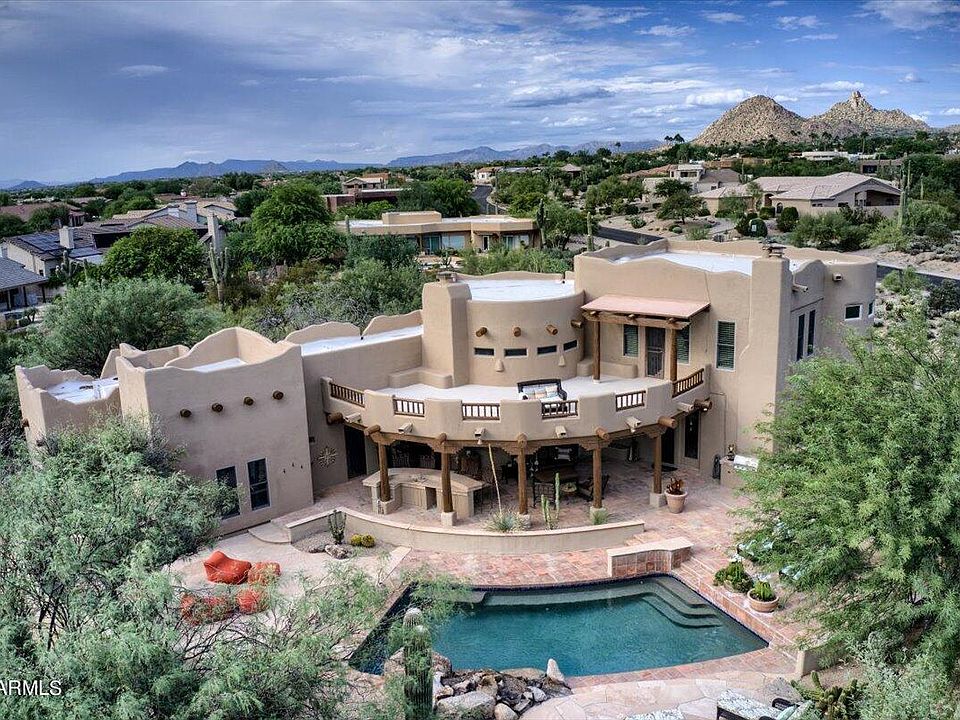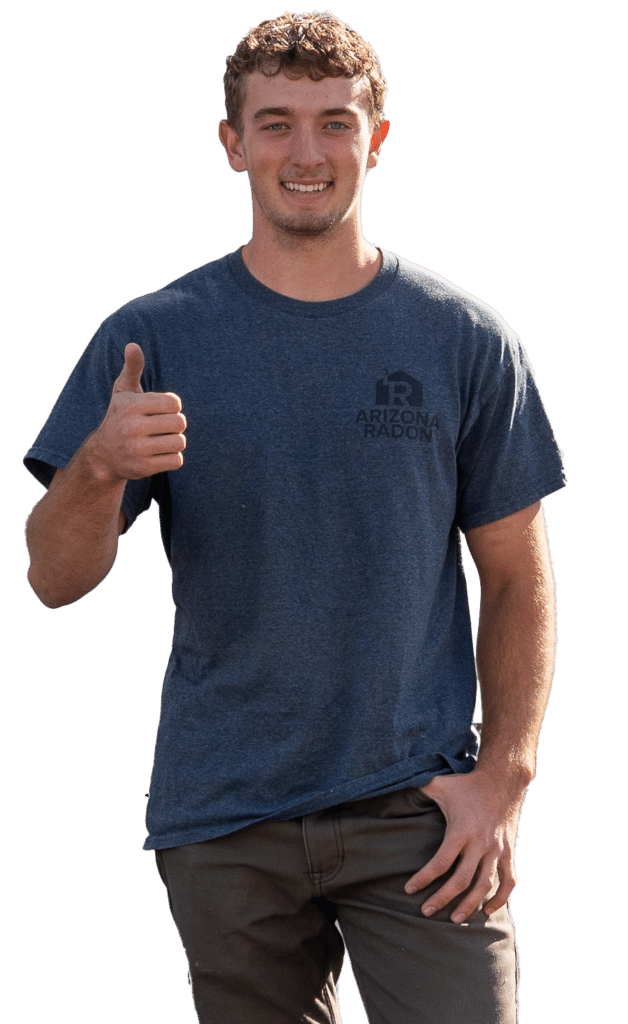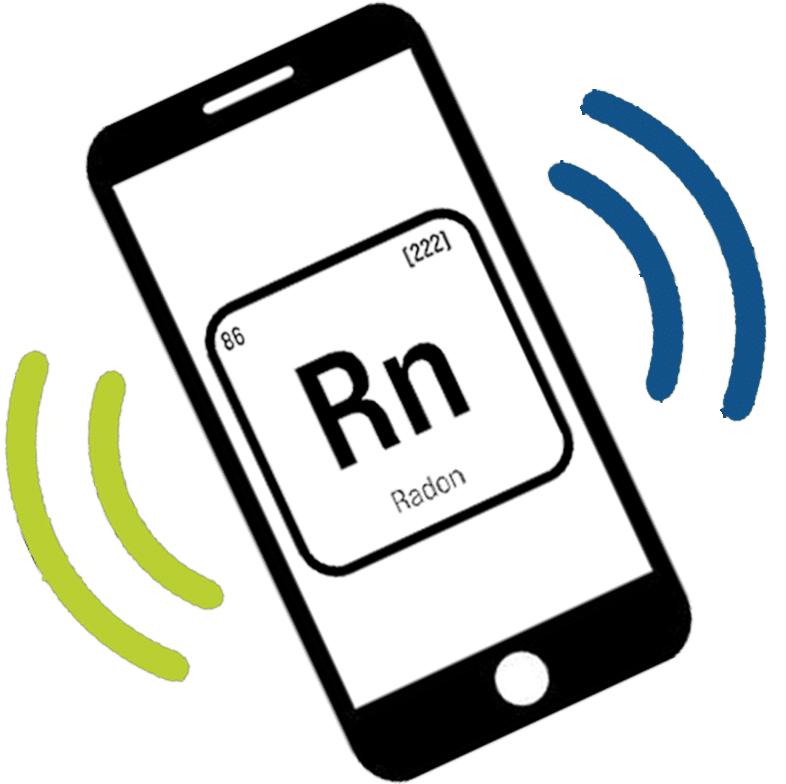Case Study: Radon Mitigation for a Residential Home in Scottsdale, AZ
- Kaber Robinson

Disclaimer: There is no known safe level of radon exposure. Any reference to the term “safe” in our materials is intended solely to indicate that the home’s radon levels have been reduced, thereby making it safer relative to its prior condition. This does not imply the complete elimination of risk associated with radon exposure.
Background
A modern, 5,000-square-foot luxury home in Scottsdale, Arizona, located near Paradise Valley, underwent radon testing as part of a routine home inspection. The results revealed an alarming radon level of 22 pCi/L, more than five times the Environmental Protection Agency’s recommended action level of 4 pCi/L. The property, built in 2018, sits on a slab foundation, and the homeowners were eager to address the issue to protect their family’s health and maintain the property’s value.
Client Concerns
Health and Safety: The high radon levels posed a significant health risk to the occupants.
Property Value: The homeowners wanted to ensure the issue was properly addressed before it impacted resale potential.
Long-Term Solution: The client sought a durable and effective radon mitigation system to maintain safe indoor air quality.
Objectives
Reduce radon levels below the EPA’s action threshold of 4 pCi/L.
Implement a mitigation system capable of handling the home’s large footprint.
Ensure proper ventilation without compromising energy efficiency.
Process Description
Initial Inspection and Testing:
Pre-mitigation radon levels: 22 pCi/L
Air circulation analysis: Identified low natural ventilation, contributing to radon buildup.
Air quality assessment: PM2.5 levels were measured at 40 µg/m³, classified as “Unhealthy for Sensitive Groups,” indicating poor air quality.
Radon Mitigation System Installation:
Installed two sub-slab depressurization systems, each with a high-powered radon mitigation fan.
PVC venting system routed through the attic and exhausted above the roofline to safely disperse radon gas.
Sealed foundation cracks and other potential radon entry points to improve system effectiveness.
Post-Installation Testing:
Final radon level: 1.75 pCi/L, a significant reduction well below the EPA’s recommended threshold.
Air circulation improvements: Adjustments to the home’s HVAC system helped optimize air movement and further reduce radon concentrations.
Post-mitigation air quality: PM2.5 levels reduced to 12 µg/m³, classified as “Good,” indicating a notable improvement in indoor air quality.
Measurable Results
Radon Levels Before and After Mitigation
| Stage | Radon Level (pCi/L) |
|---|---|
| Before Mitigation | 22 |
| After Mitigation | 1.75 |
Air Quality (PM2.5 Levels) Before and After Mitigation
| Stage | PM2.5 Level (µg/m³) |
| Before Mitigation | 40 |
| After Mitigation | 12 |
Client Testimonial
“We were shocked to learn how high the radon levels were in our home, especially since it was built just a few years ago. Arizona Radon did an incredible job explaining the process and ensuring we had the right system in place. The difference in air quality is noticeable, and we now have peace of mind knowing our home is safer for our family.”
— Mark and Lisa T., Scottsdale, AZ
Long-Term Benefits
Safer Indoor Air Quality: Radon levels now fall well within safe exposure limits.
Improved Air Quality: Lower PM2.5 levels contribute to better respiratory health.
Structural Protection: Sealing cracks in the foundation helps prevent future radon entry.
Increased Home Value: A documented mitigation system adds reassurance for future buyers.
Project Cost
The total cost of this radon mitigation project was $6,000, which covered system installation, sealing measures, and post-installation testing. The project took one week to complete.
Conclusion
If you live in Scottsdale or the surrounding areas and are concerned about radon levels in your home, professional mitigation can make all the difference. Contact Arizona Radon, LLC today to schedule a consultation and protect your home from this invisible threat.

Bio:
Kaber Robinson, a second-generation radon mitigator and the founder of Arizona Radon, has accumulated 30 years of experience in the industry. A nationally certified radon measurement and mitigation professional, Kaber’s commitment to health and environmental sustainability led him to the radon field after graduating from a renowned technical college in Kansas.
Gaining invaluable experience with a leading radon mitigation company in the United States, he traveled extensively to install systems across various environments. Today, Kaber applies his extensive knowledge and practical skills at Arizona Radon, where he ensures that each project adheres to the strictest standards of quality and safety.




